I am often amused by the excitement (mostly negative) that arises over in Britishland when there’s any talk of housing development — i.e. building new houses where hitherto there have been none. Mostly, of course, the fury arises from among the NIMBYs who, having purchased their houses in or near village A, don’t want anyone else to live nearby because of “character” and the loss thereof.
It makes no sense because there’s a distinct lack of affordable housing Over There, not the least because very little new housing gets built — and when it does, it is of surpassing ugliness. Here’s an example of one such development recently built near Cambridge:
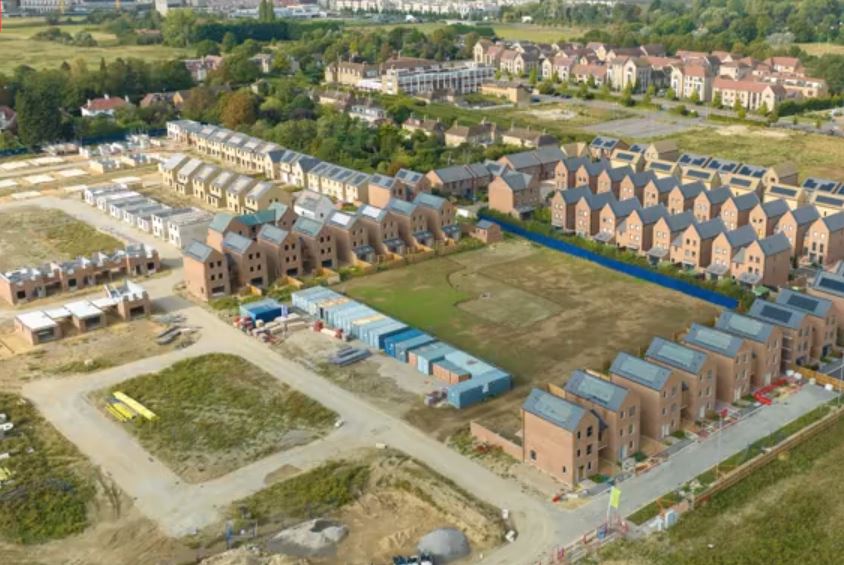
Yes, dear Readers, those are single-family homes, built according to the principles of Gropius and Le Corbusier, only with slanted roofs. Anywhere else, they’d be called “apartments” because that’s what they resemble, and I leave it to your imagination to decide how people would feel about living in such surroundings. Small wonder the existing population gets upset, if what’s coming looks like that.
Of course, it doesn’t have to be like that. As our family often says, “architecture doesn’t have to suck”, and here’s an example of same, in Doc Russia’s neighborhood a couple of towns over from Plano.

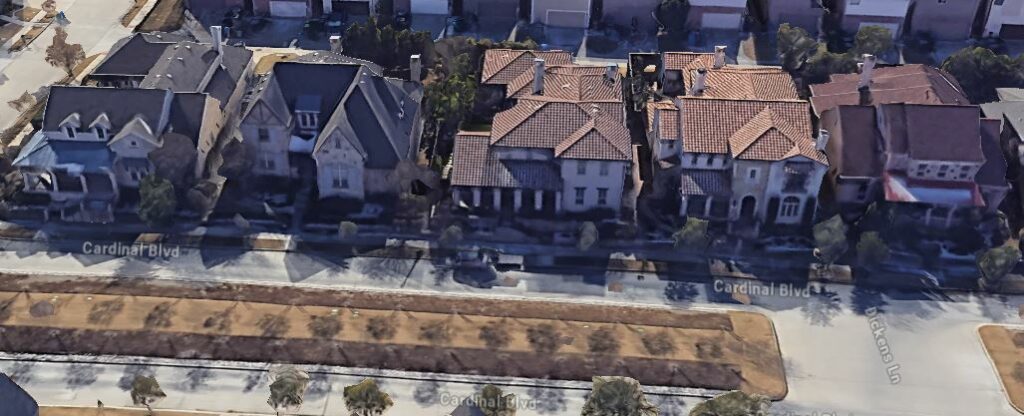
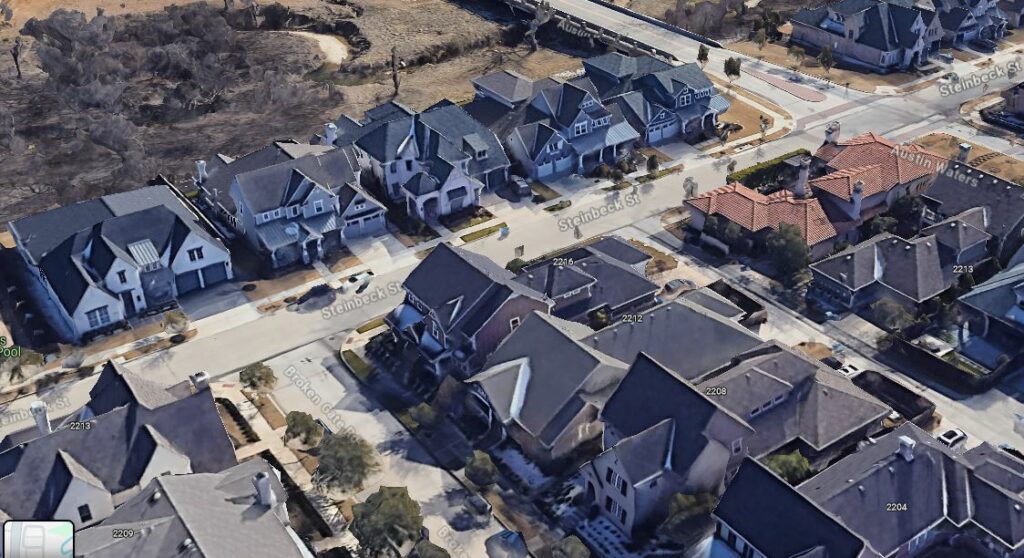
I should point out that the interiors of the above houses are almost identical: the floorplans and footprints are as close to uniform as can be imagined, and the square footage thereof likewise. (It may not look that way, but that’s the genius of the developer’s architect.)
Basically, the developer said to the initial homeowners: “We have about a dozen different looks for the houses here. Pick one, but just note that no identical outside designs can be next door to or across the road from each other, and in fact we intend to keep the designs separate as much as possible so that the development looks like a group of custom homes, even if they aren’t. Oh, and they’re all going to cost about the same, within a couple-five thousand dollars of each other depending on what cladding you choose for the front of the house.” It is a remarkably attractive development, and the prices have increased massively over time precisely because people don’t want to live in a suburb looking like that Cambridge cell-block.
And I should point out that those Brit houses and the American ones are very close in price, even allowing for the currency difference.
So the Brits could have built something according to the same ethos, but they didn’t because… well, they didn’t care, they had no imagination,there were cost savings, they figured that the buyers would just want to get whatever they could regardless of appearance, I dunno.
Anyway, the good news is that after the Cambridge development was completed, the council housing inspectors found that the entire suburb had a systemic flaw in the foundation design, with this happy result a few months later:
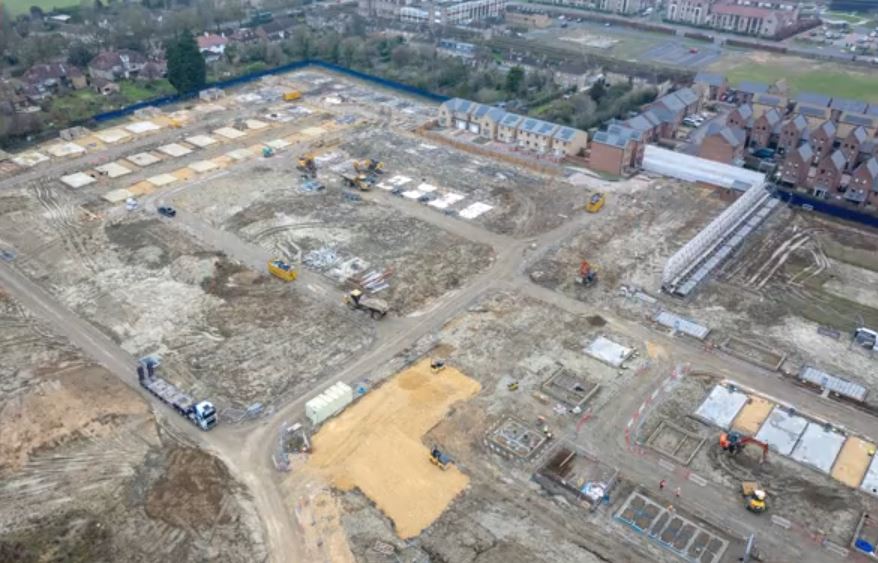
…and yes, I laughed and laughed and laughed myself sick. However, I will not offer odds that the rebuilt houses will look any different from their predecessors.
By the way, I have to point out in all fairness that we in Murka have similar problems; Doc Russia’s little enclave notwithstanding, I saw on my way home from the drugstore this horrible fucking thing that sprang up in Plano over a period of a couple months:


Those architectural pustules are townhouses, and in the normal course of events they’d lie empty for decades; but sadly, there is such great demand for new housing hereabouts (Californians, uh-huh, uh-huh) that I think the houses were almost all sold before completion. Yes, they look like nothing more than white-painted Monopoly houses all crammed together, and to say that they look nothing like any other townhouse development in Plano is an understatement. These are a block or two away from my place:
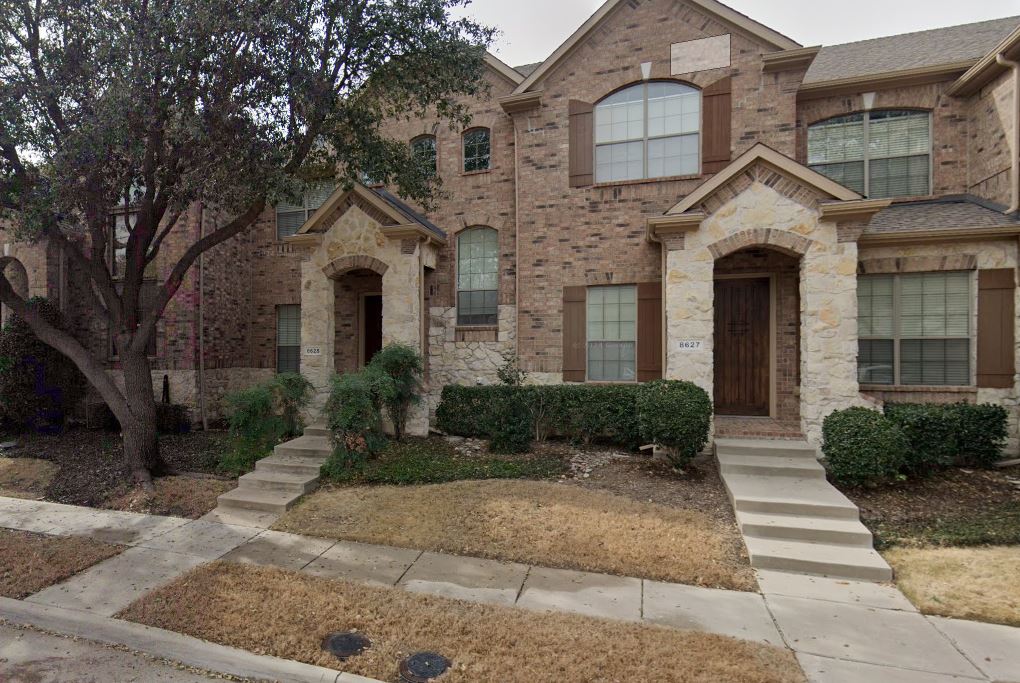
I think I’ll drop an anonymous note to our housing inspectors, saying that those white blocky things may be too dangerous for habitation because of foundation problems; but sadly, our inspection process here must be different from Over There because the foundations are inspected before any walls can be built on them.
Pity, that.

When you don’t have the space to build a McMansion for everyone, you have to compromise. And that compromise comes in the form of a smaller, more efficient, form factor in combination with smaller gardens.
And yes, I’d much rather live in something like that than in a 2-3 room apartment at the 10th floor in a high rise building, sharing a noisy hallway and stairwell with hundreds of others, most of whom can’t be bothered to keep things clean, or keep the common areas closed down to squatters and drug addicts.
Heck, I live in a suburb much like that, nice and quiet. Wish there was more parking space, but it’s enough as long as people aren’t getting too many visitors all at once.
Frankly, I don’t see a dime’s worth of difference between the Cambridge and the Plano pics, above. A cosmetically different McMansion built six feet from its neighbor is not superior to an identical 3-story brick doghouse built six feet from its neighbor. They both look like a concentration camp to me … aesthetically and spiritually revolting.
Agreed.
I live in a low budget version of that type of housing (1000 sq ft ranch houses built as a perimeter around a square block, I call mine a trailer with a truss roof).
Any time you’re crammed up against your neighbors like that its a trailer park no matter if its an actual trailer or a 5000 sq ft mcmansion.
There is one significant difference: take the numbers off the houses, and in the UK and the 2nd Plano developments, people will be lost right in front of their own house. In the first Plano development, you can tell one from another.
I started my career in architecture in 1972 and have worked on an estimated 7000 projects since then. The main thing I have learned in that time is that the average homeowner knows very little about the most expensive thing they will ever own, and most don’t even care.
What does the average homeowner care about? Getting the most for the least. Plain vanilla will work for most if they can get away with it. They want big boxes of air to store their stuff, and a place to eat and crash occasionally, and for the least amount of money possible.
Combine the overbearing requirements of the long line of gov’t authorities and you create the perfect storm. Buildings that are almost identical to each other and slick marketing campaigns to obscure that fact.
From 1955 to 2006 I almost continuously lived in some sort of subdivision where you open your bathroom window and look across a distance of 10-20 feet and see someone opening their bathroom window and you both stare stupidly at each other.
Since 2006 we have lived on small acreage in the woods and the closest neighbor is more than 600 feet away and we can barely see them for the hundreds of mature trees between us.
I will never live in suburbia again for to do so would be tantamount to moving into a cage that stifles life itself.
The funny thing is you don’t realize you’re in a cage until you move out of it.
Yup, once lived in a subdivision where, if both you and your neighbor were taking a shit at the same time and one of you ran out of toilet paper, you could easily pass a roll over thru the window.
I’ve always thought, if the developer would only take maybe one or two houses out of each street, then space the remaining houses equally, then everyone would have a half-decent yard and a bit more privacy. That alone is worth an extra $5 grand or so. Of course that means the developer makes a little less profit but it definitely raises the desirability of the neighborhood.
And as Ghost mentions, the quality of the build is often lacking. Since I do all my own home repairs, the shit I find that had to have been original developer is disturbing. Electrical is the worst. I fix what I can and try to ignore the rest, hoping the entire street doesn’t burn down while I’m sleeping.
First Condo I owned was in in of those stamped out developments , we woke up one morning to fire trucks and flames outside the bedroom window with the view of the neighbors Garage across the alley completely ablaze. Fortunately the fire station was only a block away and rapidly flooded everything before it spread to the entire 100 + other identical units. That was the last time and only time I lived in a place so close to a neighbor.
Now, like Ghost, I can’t see the nearest neighbor through the tree even though we live in similar style, but not very identical house built by the same developer during the same period of time. ( and still less than 45 min to downtown Boston. )
The problem over there and over here is that way too many people are arriving. The new culturally enriching “refugees” get dumped into the cities. The normals flee the Third World that their neighborhoods just became, and end up in a development like your photos.
They used to teach Supply and Demand in school but people think it doesn’t apply to housing.
Economics I got in the 1980s about “supply and demand” was already a big fat lie. Full blown Keynesian nonsense, which had been proven fundamentally flawed long ago even then.
But it appealed to the left as it promoted big government controlling supply and demand through taxation and subsidies in detail.
Which is of course exactly what the ministry of education wants to promote, because they’re part of the government.
And we still see it happening here, in detail.
Government here last year created a new law requiring 100.000 houses to be built per year for the next 10 years.
At the same time they created another new law that makes building almost anything impossible because of ‘the environment’, ensuring no new construction at any scale can take place.
And then they went ahead and made more new laws that make it impossible to expand the electrical and water grids, thus making it impossible for anything that does get built to be hooked up to utilities! But that’s irrelevant as they also passed a law stating that by 2025 the need for electricity and water in the country will be 50% of what it was in 1997, by decree. So by law there is no need to expand the grid!
End result: on paper 100.000 new houses are being built every year for the next 10 years, but in reality nothing is being built at all.
But the reality doesn’t matter as the theory is what gets put out as fact by the mainstream media.
I grew up in a neighborhood that was built in the 1950s. Every two houses had the same floor plan or maybe more. The exterior of the houses were all different and the neighborhood didn’t look anything like the rubbish that developers are building now where everything looks absolutely identical.
I’m sure these cookie cutter bland boring buildings are designed and built because they are cheap to reuse the same design.
I lived in a condo complex for a few years and it was tolerable at best. I’d rather live in a neighborhood with character and different houses. The cookie cutter houses are just plain boring.
Gotta make room(s) fo all those poor refugees coming in from …
In that case we ought to be building more airplanes. In Boeing’s case it appears that their paneled over doors are handy for use at Air Pinochet Airlines
Such cynicism in one so young… not that it’s a bad idea, of course.
Flexible, multi functional machinery is all the rage now.
Oh, Yeah!
Malvina Reynolds lived in vain.
.
Yep.
I’m sure a modern artist could string together some blather about the houses in Plano expressing something about freedom in society.
And to prevent someone from spoiling their megalithic blocking of homes, there must be a home owners’ association to make sure the outside walls are painted with the correct shade and brightness of white. Otherwise, this would be an excellent opportunity to paint each house in a different color. In Austria, outside Vienna there is a housing development known as “Hundertwasserhouse” which has the exterior painted in a paint store variety of colors, with windows apparently cut out at random. The Architect, Hundertwasser, explained that Housing projects need some sort of visual appeal to stimulate the residents, and blank white walls are as depressing as blank gray walls. It absolutely does not fit in with the neighboring buildings, some of which are Biedermeyer, others in Bauhaus style, and others in classic fin de siecle style. The people who drive past it on the autobahn consider Hundertwasser to be mad.
In the same vein an architect was hired to construct an expansion wing to classically designed building on either the UCLA campus or the Occidental campus. The trustees wanted something that would look like it had been built at the same time as the original building. The Architect produced some square brutalist concrete monstrosity that might fit in if UCLA had been bombed to rubble. The trustees were unhappy as one would expect, and the architect insisted he carried the style over to the new building by use of a line of bricks around the building like a belt line between the first and second floors.
My brother is an architect who supervises construction of large multi family houses (I just realized why I haven’t seen so much as an artists rendering of anything his firm has built in the last twenty years). He said that in Architectural school they had to submit their projects each quarter to something he called a “Crit”, short for Critique. This is just like Modern Art with the modern artists having to explain their artwork.
As Charles Russell said, “An artist is the only thing you can say you are that nobody can say you aren’t.”